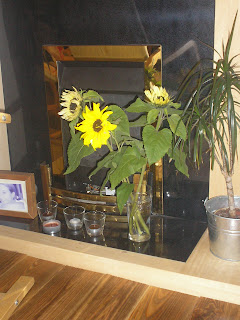There isn't much colour on the plot at the moment, apart from that lonely crocus that appeared in the middle of an empty bed ... The snowdrops below were actually photographed outside the flat!
Last week I was seeking inspiration for spring and summer blooms and inspiration I found on a couple of trips to Poundland and Poundstretcher last weekend - not your usual suspects in terms of garden centres but they actually have a very good selection of seeds and bulbs at a fraction of garden centres' prices. Here is what I came back with !
I spent a large part of Sunday afternoon deciding what should go where and finally came up with a plan: the larger, bolder plants will go in the long border on the left side of the plot and the smaller ones will go on the new flower border in front of the lawn. I filled the long border last Sunday and am now waiting for milder temperatures and the end of the frosts to plant the rest in the smaller border.

So in the long border we've got: dutch iris, physalis, lupins, gladioli, gysophilia, red hot poker, triteleia and acidanthera.
In the small border will go: lillies, freesias, tigrida, sparaxis and probably some annuals.
I also got a bit carried away with the annuals and now have a selection of seeds which should get doted around the vegetable beds: nasturtiums, sunflowers, poached egg plants, mimulus, nemesias, nigellas, nemophilias, forget me nots, marigolds and snapdragons. That seems a little ambitious though and I have a feeling that some of them might not make it out of the seed packet! Only time will tell I suppose.
I've sowed some sweet peas inside last week, some seeds I saved last year and some "High Scent" variety I bought this year. One week on, a few are already poking their heads through the compost !
Hopefully that will mean colourful bouquets throughout the summer!



















